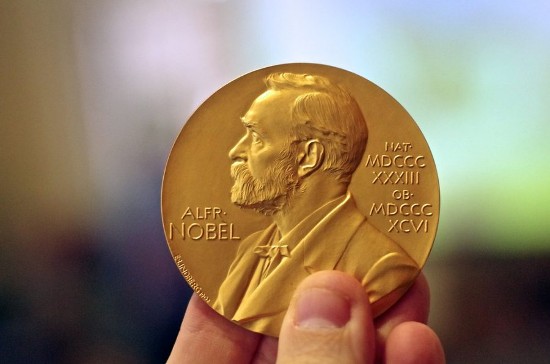It has always puzzled me why the Nobel Prize has such a small number of categories. I know these were designated in Alfred Nobel’s last will and testament but surely the Nobel Prize Committees can have a say in adding categories of increasing importance to the world in recognition of new science and human challenges we face.
As it has been from the beginning. In 1895 Nobel specified five awards for advances in the sciences of chemistry, physics, and medicine, and in the humanities for literature and peace. He died in 1896, and his executors established the prizes as he wished. Then in 1969, a sixth was added for economics. But since then nothing new.
In our current world where we are witness to rising atmospheric temperatures, rising sea levels, increasing extreme weather, growing food insecurity, and a digital and telecommunications revolution that is altering almost every aspect of our existence on the planet, one would think that an award for the environment might be the seventh category worth recognizing and that there should be others.
The workaround for the environment of course has been in the works for a while. That’s why a Peace Prize was given to Al Gore in 2007 along with the IPCC, the intergovernmental panel that had been issuing annual reports on the state of the world’s environment going back to the 1990s.
So this year is no exception. This time two environmental scientists are among the three to receive the Nobel Prizes for Physics. The three winners, Syukuro Manabe of Princeton University in New Jersey, Klaus Hasselmann of the Max Planck Institute in Hamburg, and Giorgio Parisi of Sapienza University in Rome have been doing research that might be more suitable for a different category. Only Dr. Parisi’s work sounds like physics.
The Chair of the Nobel Committee for Physics, Thors Hans Hansson, in announcing the physics awards said, “The discoveries being recognized this year demonstrate that our knowledge about the climate rests on a solid scientific foundation, based on a rigorous analysis of observations.” In other words, the committee sees the importance of the environment as award-worthy.
The first winner, Dr. Manabe has been doing work focused on computer modelling that links carbon dioxide concentrations to global warming and explores the impact on oceans and atmosphere, and in particular, the North Atlantic Meridional Overturning Circulation and its potential to accelerate Greenland ice sheet melting.
The second, Dr. Hasselmann’s contribution to environmental science is also in modelling, but his focus has been on short-term climate events that we call weather and their causal link to global warming. His models have established how climate change is affecting droughts, heat waves, and storms that produce intense rainfall events.
The third, Dr. Parisi, unlike the previous two, is truly working on physics in the classic sense. His research has discovered the interplay of disorder and fluctuations within the physical world from the atomic scale to one that is global. As one admirer describes it, Dr. Parisi is showing us that we may be able to predict outcomes out of randomness, disorder and chaos in the natural world.
So two environmentalists and one physicist are Nobel Prize Physics winners. So why not cut to the chase and create that seventh category, a Nobel Prize for the Environment. Instead of the Nobel committees awarding chemistry, economics or peace prizes to an environmental scientist or activist, why not just create this category now? Considering how important the issue of climate change is in our present world it just makes sense.
And while they are at it, the Nobel Prize committees could look at the efficacy of other award categories. Why not one for biology, another for agriculture, and another for the ongoing advances of the digital revolution? It’s time for the legacy of Alfred Nobel to catch up to the 21st century.









